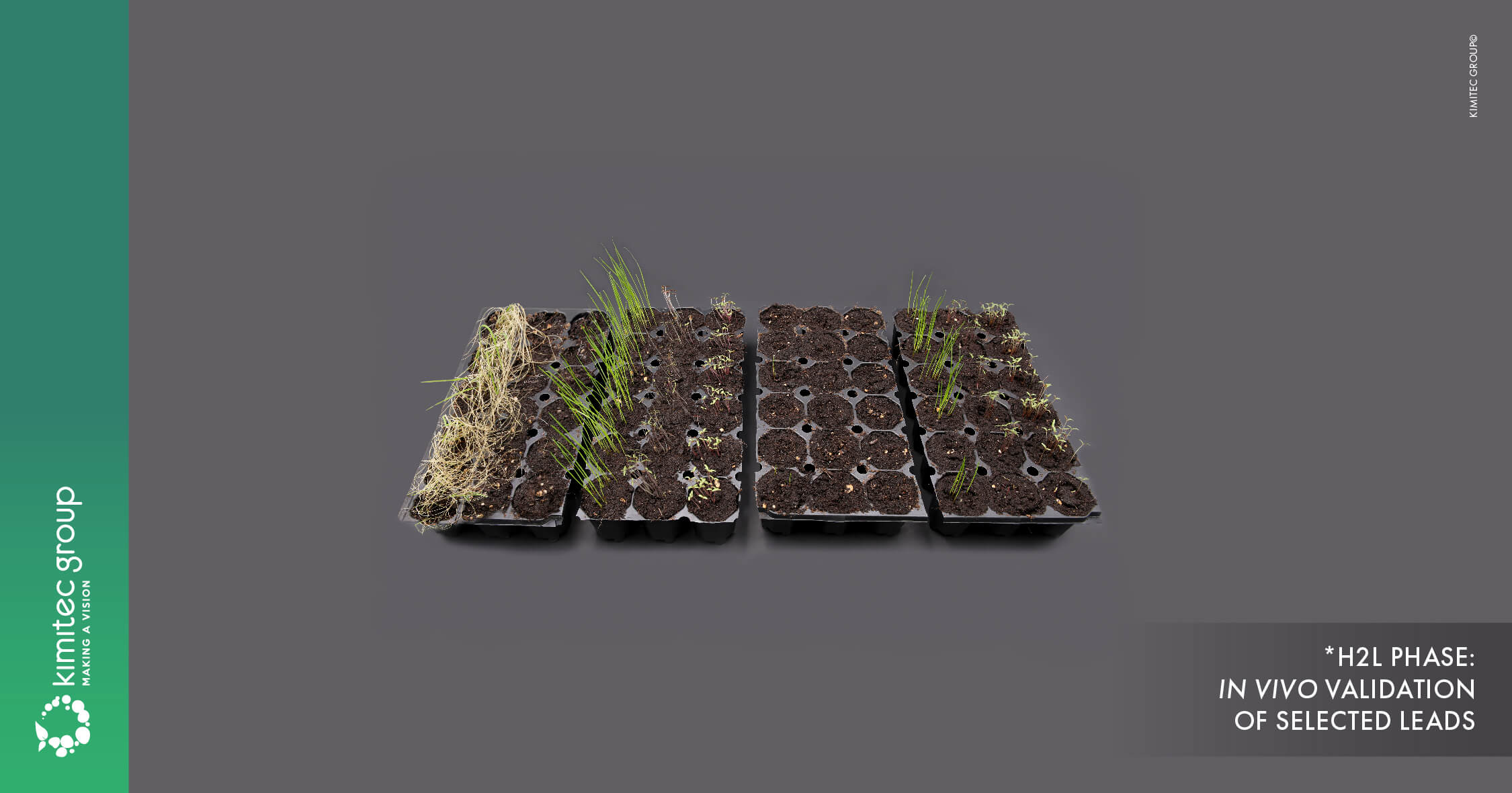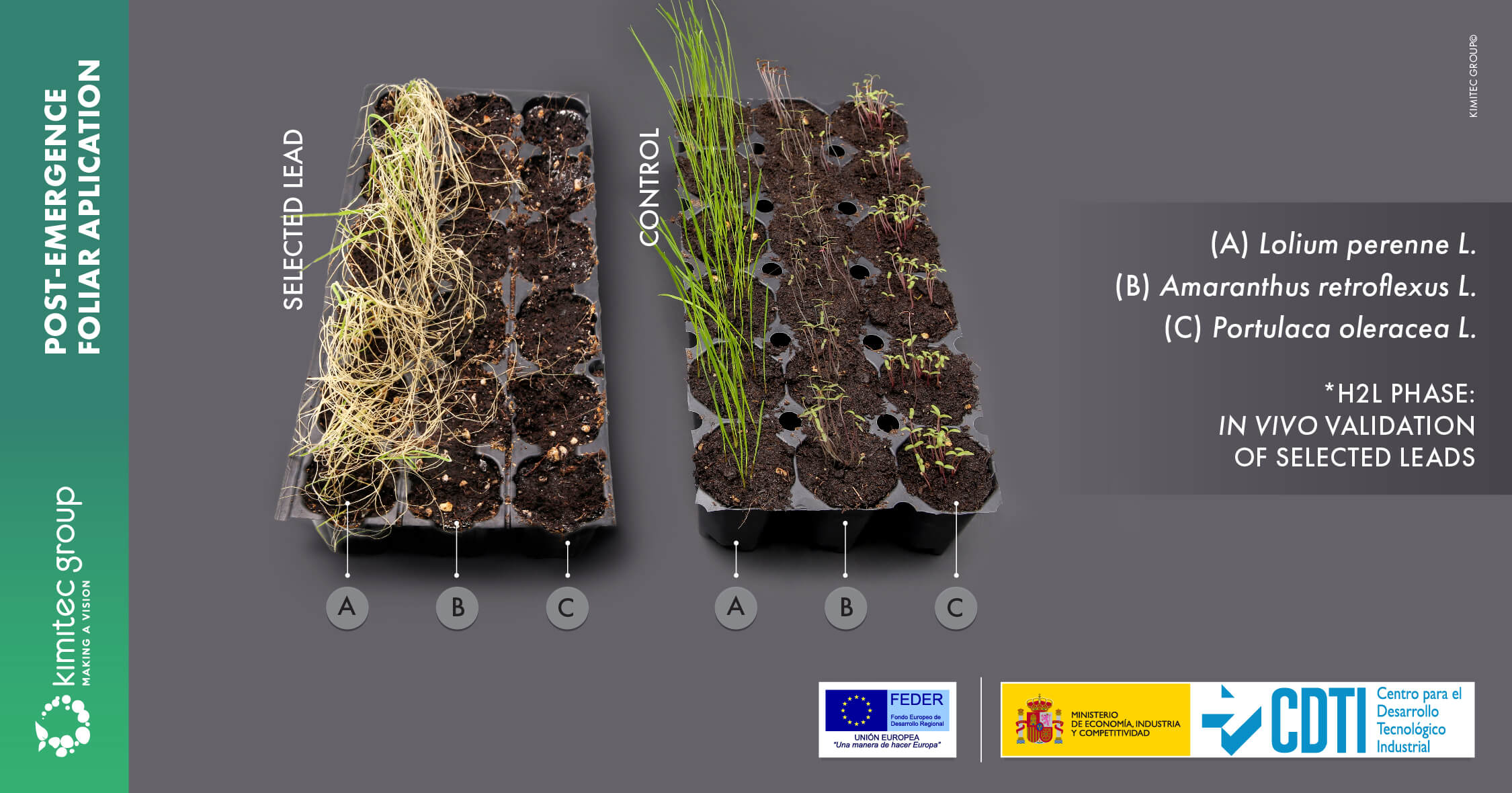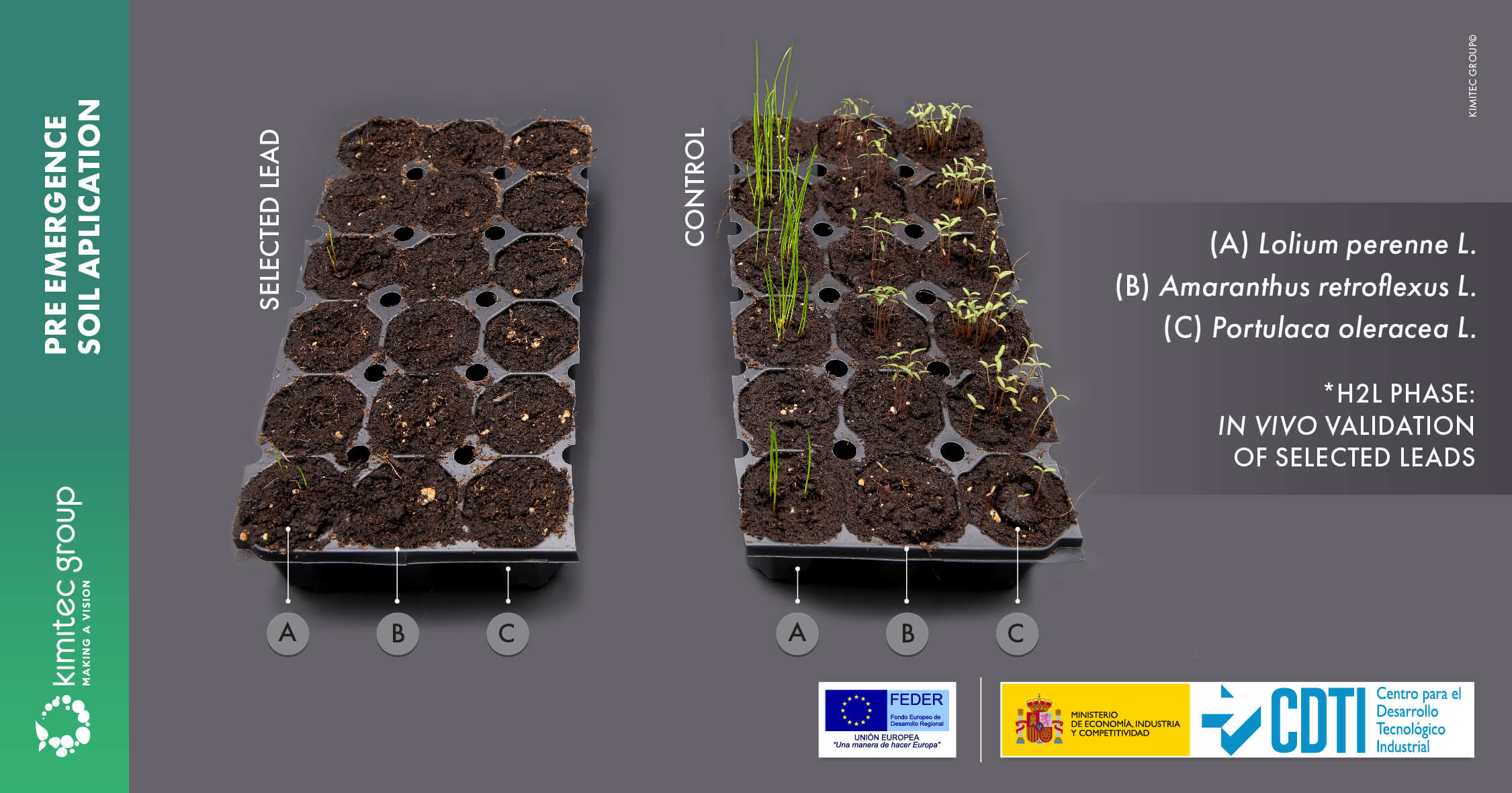In vivo assay bioherbicide prototype

In the previous post, we discussed the research we are conducting toward the development of a natural glyphosate substitute. The task is challenging because we want it to be as effective as the synthetic chemical we want to substitute, in addition to being a natural alternative. We understand, however, that our goal of converting sustainable agriculture into a residue-free practice, without bio-accumulation, conscious of the environment, and the health of people – but just as productive as traditional farming methods – can only be accomplished with a product such as this.
We have recently begun the HIT to LEAD (H2L) screening phase against the different target weeds. To accomplish this, we have designed and adapted different in vitro and in vivo trials, allowing us to identify different mechanisms of action. So far, a total of 10 HITS have been identified with promising levels of efficacy against the positive control (glyphosate), which are currently in the secondary screening phase for their potential selection as leads or as synergistic components.
Let us show you one of those in vivo tests.
Foliar contact treatment during weed post-emergence

– In the first tray, the weed species treated with a bioherbicide prototype developed by Kimitec are observed.
– The weed species with the control treatment are in the second tray.
Three types of certified seeds for different weed species have been sown in each tray (from left to right):
1) Lolium perenne L.
2) Amaranthus retroflexus L.
3) Portulaca oleracea L.
Conclusion: Kimitec’s bioherbicide prototype shows a high level of phytotoxicity against dicotyledons Amaranthus retroflexus L. and Portulaca oleracea L during post-emergence.
Irrigation treatment during weed pre-emergence

– In the first tray, the weed seeds treated with a bioherbicide prototype developed by Kimitec are observed.
– The weed seeds with the control treatment are in the second tray.
Three types of certified seeds for different weed species have been sown in each tray (from left to right):
1) Lolium perenne L.
2) Amaranthus retroflexus L.
3) Portulaca oleracea L.
Conclusion: A significant reduction (>95%) in germination was observed in the grass species Lolium perenne L., and germination was completely inhibited in dicotyledons Amaranthus retroflexus L. and Portulaca oleracea L.
*This project is financed by CDTI, where we participate in collaboration with companies of great relevance in the olive sector (De Prado) and the fresh fruit and juice sector (Grupo AMC). This collaboration will allow us to have new candidates derived from their production processes (co-products and by-products). In addition, De Prado has experience in the extensive application of herbicide, which will give us additional support in our future field validation trials.
